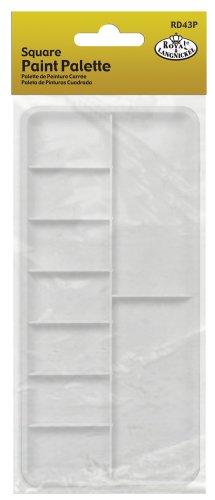What is a minimalist color palette?
A minimalist color palette is a selection of colors that consists of only a few neutral shades. It is typically used in design and art to create a clean and simple aesthetic. The main idea is to focus on simplicity and eliminate any unnecessary elements. Minimalist color palettes are often associated with minimalist design styles, which prioritize minimalism and simplicity.
Why use a minimalist color palette?
There are several reasons why one might choose to use a minimalist color palette. Firstly, it can help create a sense of calmness and tranquility in a design or artwork. The limited color choices allow for a more focused and cohesive visual experience. Additionally, minimalist color palettes can help draw attention to other elements in a design, such as typography or images.
Using a minimalist color palette can also make a design more timeless and versatile. Neutrals and muted tones are less likely to go out of style compared to bold and vibrant colors. This can be especially beneficial for brands and businesses that want to create a consistent and enduring visual identity.
Lastly, a minimalist color palette can be more accessible and inclusive. By using neutral colors, which are generally more widely accepted and appealing, a design can resonate with a larger audience. This can be particularly important for websites and apps that aim to reach a diverse user base.
How to create a minimalist color palette?
Creating a minimalist color palette involves careful consideration of colors and their combinations. Here are some steps to help you create your own minimalist color palette:
1. Start with a neutral base: Choose a neutral color, such as white, gray, or beige, as your primary color. This will form the foundation of your palette and provide a sense of simplicity and elegance.
2. Add accent colors: Select a few additional colors to complement your neutral base. These colors should be muted and understated, such as pastel shades or desaturated tones. Limit the number of accent colors to keep the palette minimal.
3. Consider color relationships: Pay attention to the relationships between colors in your palette. Make sure they harmonize well and create a cohesive visual experience. You can use color theory principles, such as complementary or analogous colors, to guide your choices.
4. Test your palette: Once you have chosen your colors, test them together in different combinations to see how they work. Experiment with different proportions and placements to find the most visually pleasing arrangement.
Examples of minimalist color palettes
Here are a few examples of minimalist color palettes to inspire your own designs:
1. Black and white: This classic minimalist palette consists of only black and white. It evokes a sense of elegance and simplicity and is often used in high-end branding and graphic design.
2. Monochromatic: A monochromatic palette uses different shades of a single color. This creates a harmonious and soothing effect, and can be especially effective in creating minimalist art or interiors.
3. Neutrals with a pop of color: Start with a neutral base, such as gray or beige, and add a single subtle pop of color, such as a pale blue or soft pink. This creates a minimalist yet visually interesting palette.
A minimalist color palette is a selection of neutral shades used to create a clean and simple aesthetic in design and art. It can help create a sense of calmness and focus attention on other elements in a design. Creating a minimalist color palette involves choosing a neutral base, adding muted accent colors, considering color relationships, and testing different combinations. Examples of minimalist color palettes include black and white, monochromatic, and neutrals with a pop of color. By using a minimalist color palette, you can achieve a timeless and versatile design that resonates with a larger audience.






